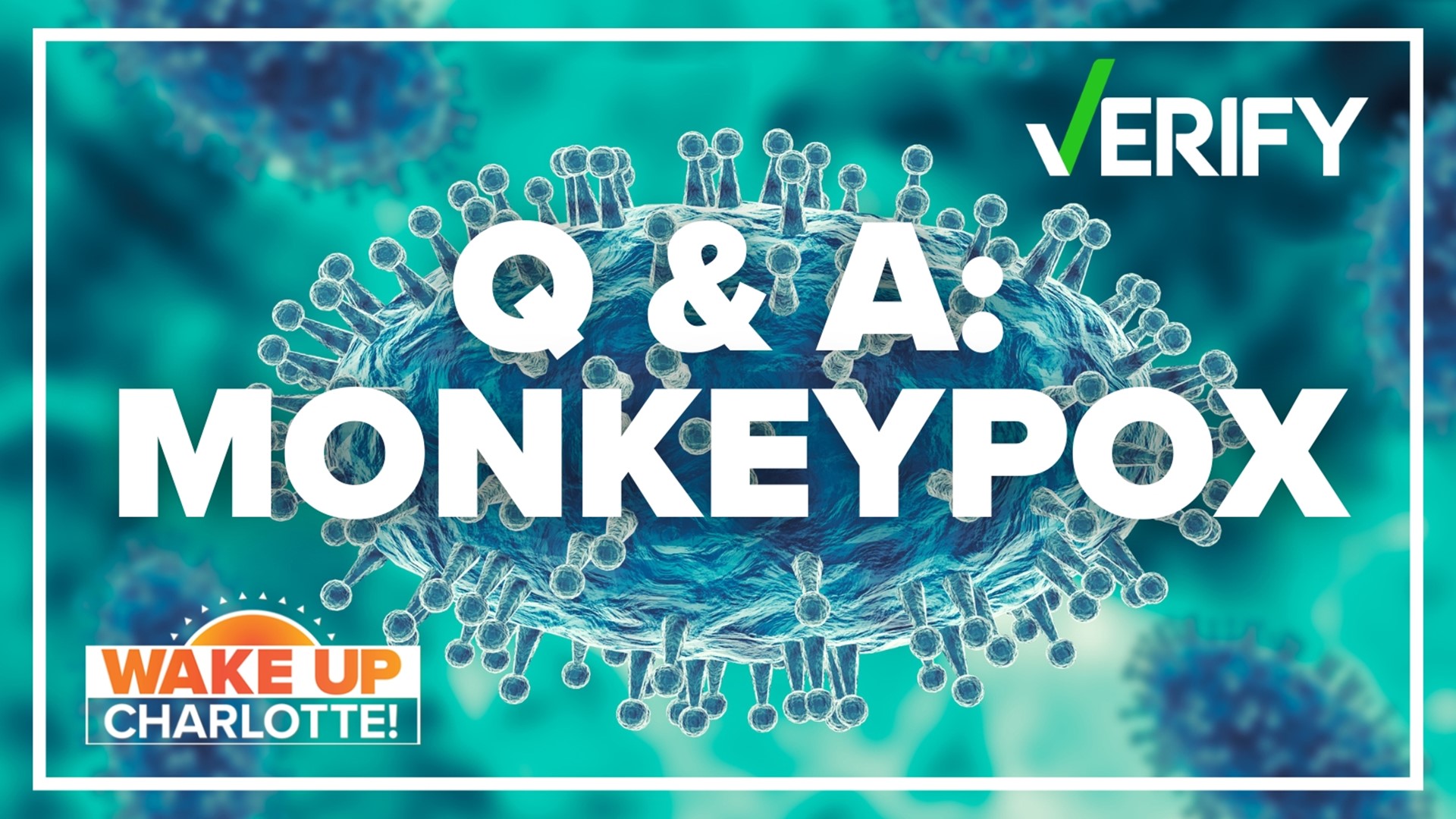WASHINGTON — The monkeypox outbreak received the highest level of alert from the World Health Organization on Saturday, which is now calling it a public health emergency of international concern.
Although the majority of infections have been between men who have sex with men, officials have stressed anyone is susceptible to getting the virus. There have been at least two confirmed monkeypox cases in children, according to the Centers for Diseases Control and Prevention.
As case numbers swell in the U.S. and as health officials increase testing resources, here are key indicators of symptoms and when to get tested.
What are the symptoms of monkeypox?
The symptoms tend to overlap with those of most viruses. Fevers, headaches, chills, muscle aches, exhaustion and swollen lymph nodes are all symptoms of monkeypox. The true indicator that distinctly separates it from the rest is a pimple-like rash that appears on the face and other parts of the body, according to the CDC.
"The symptoms of monkeypox are very much like the symptoms of a cold initially," said Dr. Payal Kohli, assistant clinical professor at the University of Colorado. "So if you've got fevers, exhaustion, chills, a rash with or without swollen lymph nodes, you have to have a pretty high concern that it could potentially be monkeypox."
Symptoms may vary from person to person, and the rashes can appear at different stages and typically last 2-4 weeks. Some people tend to get rashes first and then symptoms, but others might just get a rash.
The CDC recommends monitoring temperatures twice a day if exposed to someone with monkeypox as well as keeping an eye for other symptoms. Once symptoms develop, immediate isolation is recommended.
Here is the full list of symptoms according to the CDC:
- Fever
- Headache
- Muscle aches and backache
- Swollen lymph nodes
- Chills
- Exhaustion
- Respiratory symptoms, such as a sore throat, nasal congestion or cough
- A rash that can look like pimples or blisters that appears on the face, inside the mouth, and on other parts of the body, like the hands, feet, chest, genitals, or anus.
How does monkeypox spread?
Monkeypox, which is a cousin of smallpox, typically spreads through direct contact of infected rashes, scabs or bodily fluids. However, it can spread after prolonged face-to-face contact or during intimate contact such as kissing, cuddling or sex.
The blister-like rashes are infectious, especially if they are shedding.
Touching clothes or linens previously touched by someone with monkeypox is another possible form of transmission. The virus can spread as soon as symptoms start and until the blister-like rashes are fully healed.
Monkeypox also poses a threat to pregnant woman as the virus can spread through their placentas.
When should you get tested for monkeypox?
It can be difficult to decipher when or if you need to get tested for monkeypox, especially because the rashes may appear similar to other skin-related issues such as pimples. Other confusions come from the rashes forming near genitals, making it comparable to herpes or other sexually transmitted diseases.
However, if you have been exposed to the virus or develop symptoms, it may be time to get tested.
The test for monkeypox is a polymerase chain reaction or PCR, much like the ones that detect COVID-19. However, there are no at-home tests currently for monkeypox. Results may take anywhere from 24 hours to three days, but as testing increases results are expected to take longer.
"it's been a real challenge in many communities to find sites that are able to perform high quality tests with a high level of accuracy and have that what we would like that relatively quick turnaround to actually be able to figure out you know, whether you're positive or negative and inform your contacts and do all the contact tracing," Kohli said.
In contrast to COVID tests, the monkeypox test needs a swab of the rashes rather than from your nose, Kohli explained. The rashes have a large concentration of virus particles, so if you don't have any rashes or are asymptomatic there is no way of testing for the virus yet.
Testing can be a challenge because most primary doctor's offices don't have access to monkeypox tests, Kohli said.
Following the W.H.O. announcement this week, the CDC has expanded access to its monkeypox testing capacity, making it more accessible for people to get tested. According to the CDC, the five largest commercial labs in the U.S. are now conducting tests, bringing the total capacity to 80,000 per week.
Monkeypox vaccine status
The U.S. had come under fire for slow response to vaccine distribution. This week, health officials signed off on nearly 800,000 more doses of monkeypox vaccines.
The two vaccines available are ACAM2000, which requires four shots, and JYNNEO, which requires two shots. Monkeypox is closely related to smallpox, so the vaccine offers protection against both viruses.
The vaccine offers protection even after being exposed to monkeypox, which is why health officials recommend that people get the shot within four days of exposure.
Individuals are considered fully vaccinated and protected two weeks after receiving their final dose. It may be a while before more vaccines are readily available in the U.S., which can tamper with wait times and appointments to get the vaccine.
"I think we underestimated the extent and spread of this outbreak because we had the vaccine already made. And because we have limited supply of vaccine, we're really not able to ramp up vaccinations nearly as much as we should," Kohli said.

